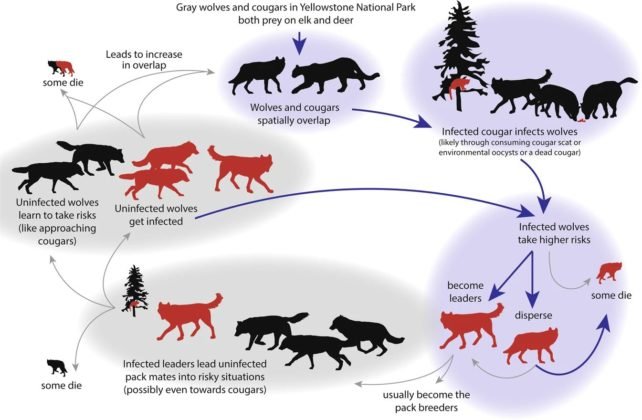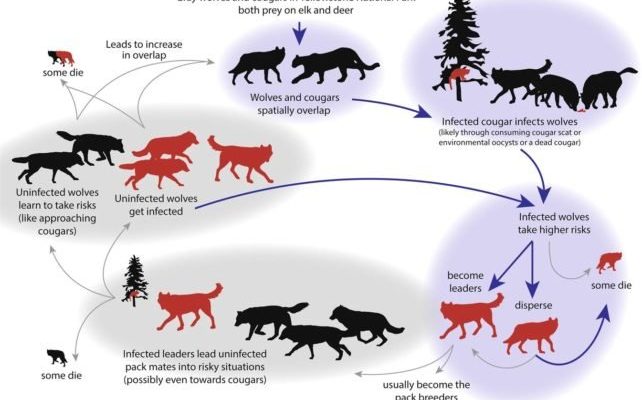
Wolf worms, scientifically known as *Dichelyne spp.*, are parasitic organisms that primarily target canids like wolves, foxes, and domestic dogs. What’s intriguing is that certain mammals seem to handle these parasites better than others. Some even show little to no symptoms when infected. As we explore this topic, we’ll uncover the fascinating world of wolf worms, how they affect different mammals, and what factors contribute to this resistance.
What Are Wolf Worms?
Before we dive deeper into the topic of resistance, let’s clarify what wolf worms actually are. These parasites are the larval stage of a nematode, which is a type of roundworm. They typically find their way into their hosts through contaminated water or food sources, or even directly from the environment.
Wolf worms primarily thrive in the intestines of their host, where they can cause a range of symptoms, from mild discomfort to severe health issues. In canids, for instance, an infection can lead to vomiting, diarrhea, and in some cases, more serious conditions. Here’s the thing: while they can wreak havoc within certain species, not all mammals seem to suffer the same consequences from these pesky parasites.
Which Mammals Are Affected?
When it comes to wolf worms, canids like wolves, coyotes, and domestic dogs are the main targets. However, *other mammals* also play a role in the ecosystem where these parasites exist. Animals such as feral cats and raccoons can harbor these infections as well. However, you might be surprised to learn that some mammals demonstrate a remarkable level of resistance.
For example, herbivores like deer and certain rodents may come into contact with wolf worms, but they often show little to no symptoms. This seems to suggest that their immune systems can neutralize the impact of the parasites, allowing them to continue their daily lives without significant disruption. So, what gives?
How Do Mammals Develop Resistance?
You might be wondering why certain mammals are more resistant to wolf worms than others. Well, it often boils down to a combination of genetics, immune response, and environmental factors. Let’s break it down.
Genetics plays a significant role in how resistant a species is to infections. Some mammals simply have immune systems that are better equipped to handle parasites like wolf worms. They may possess specific genes that enhance their ability to mount an effective response against these intruders.
Additionally, exposure to wolf worms over generations may lead to a *natural selection* process. Mammals that can fight off these parasites are more likely to survive, breed, and pass on their resistance traits to their offspring. It’s nature’s way of ensuring the survival of the fittest.
The Role of Environment
The environment can also play a huge role in how mammals interact with wolf worms. Different habitats mean different exposure levels to these parasites. For example, mammals living in clean, uncontaminated areas may encounter fewer wolf worms than those in regions where these parasites are prevalent.
Moreover, factors like diet and overall health can influence resistance. Mammals with a balanced and nutrient-rich diet often have stronger immune systems that can fend off parasites. In contrast, those with poor diets may struggle to combat infections, making them more susceptible to wolf worms.
Comparing Resistance Across Species
When we compare resistance among various mammals, it’s fascinating to see how different species adapt. For instance, while wolves may exhibit symptoms from a wolf worm infection, other mammals like rabbits seem to shrug it off without a second thought.
This comparison highlights the complexity of host-parasite interactions in nature. It’s not just about being infected; it’s about how a species has evolved over time to deal with these challenges. The mere presence of wolf worms doesn’t spell doom for every mammal; some have found ways to coexist with these parasites.
The Importance of Research and Understanding
Studying resistance to wolf worms isn’t just about academic curiosity; it has real-world implications too. For wildlife conservation, understanding how different species handle parasites can aid in developing management strategies. For domesticated animals, like dogs, this knowledge can help veterinarians create effective treatment plans.
Research into wolf worms and their effects on mammals can also shed light on broader ecological health. Healthy animal populations contribute to balanced ecosystems, and by understanding how various species resist parasites, we can better protect our wildlife.
So, do certain mammals show resistance to wolf worms? Absolutely! The world of parasites and hosts is a complex one, full of unseen battles and fascinating adaptations. As we’ve learned, factors such as genetics, environment, and diet all contribute to how mammals cope with these pesky parasites.
Next time you encounter a wolf—or even a domestic dog—take a moment to appreciate the silent struggle that’s happening beneath the surface. Understanding these relationships enriches our knowledge of the natural world and helps us appreciate the resilience of life in all its forms. It’s a reminder of the delicate balance of ecosystems and the hidden efforts of evolution in action.

